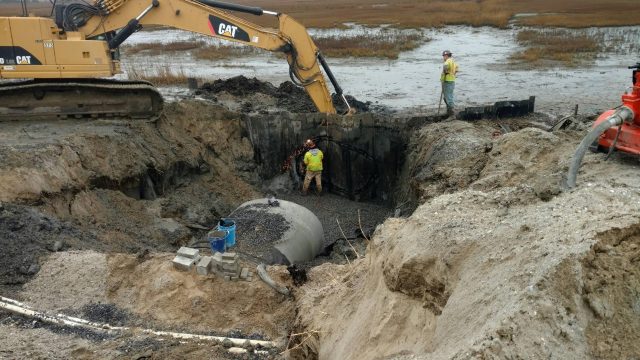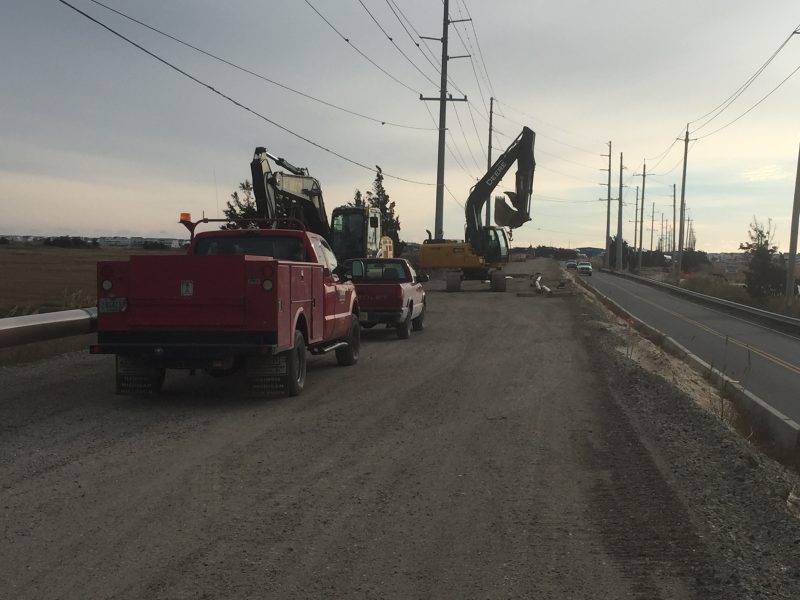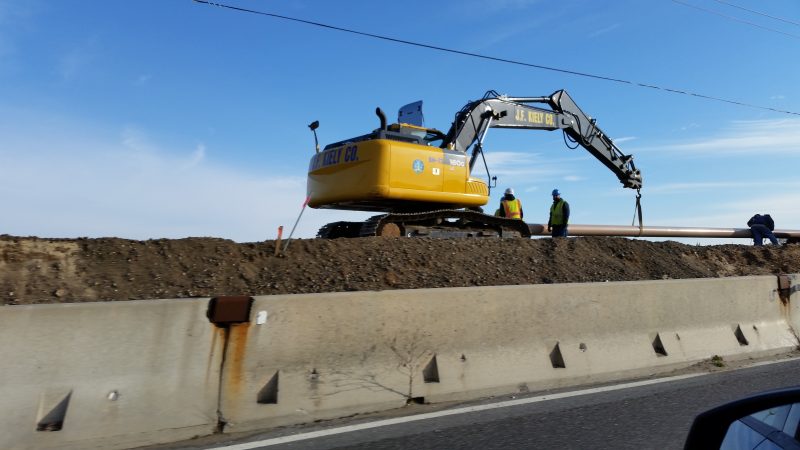
By Donald Wittkowski
If all goes as planned, motorists will be taking the “high road” in and out of Sea Isle City by late February.
The multiyear, $12.7 million reconstruction of Sea Isle Boulevard has entered a crucial phase as a final push is made to build the next part of the elevated roadway by a March 15 deadline.
The project will raise Sea Isle Boulevard by 4.5 feet, creating a much higher and drier storm evacuation route than the low-lying road that exists today.
“The purpose is to raise the roadway. With the sea levels rising, we are getting more and more flooding,” Cape May County Engineer Dale Foster said.
Sea Isle Boulevard is being reconstructed between the northbound entrance to the Garden State Parkway and the Ludlam Thorofare Bridge. It is the main gateway for Sea Isle and serves as the island’s storm evacuation route.
The current phase of the project includes shifting traffic onto the new part of the road. Construction crews are scheduled to pave the new road in January and open it to traffic by late February, Foster said.
The winter weather will be a big factor. In order for paving to be done, the ground can’t be frozen and the temperature must be at least 40 degrees, Foster explained.

Paving will be just one part of the multifaceted project, which is facing a tight deadline before work must shut down on March 15 to protect the ospreys that build their nests in the surrounding marshlands.
The environmental permits for the project require construction to come to a halt between March 15 and Aug. 15 during the Ospreys’ nesting season. Foster said construction is prohibited within 1,000 feet of the nests during that time.
Ospreys, formally known as a “fish hawk,” are one of New Jersey’s largest raptors. They are classified as a threatened species in the state.
Beating the March 15 deadline isn’t the only challenge confronting the construction crews. They are currently installing a gas main and must complete that work before construction resumes on the roadway, including the paving.
The road will be built on top of what is now a mountainous dirt embankment that is about 1.7 miles long. The massive embankment is currently tucked behind concrete construction barriers on the north side of the road.
The construction contractor recently completed removing excess dirt from the embankment to prepare it for paving. New guiderails and lighting also must be installed to get the road ready for traffic in late February, Foster said.
Access will continue on the boulevard during construction. There will be one lane open in each direction, the same as now, Foster said.
Motorists currently must navigate along narrow lanes because construction barriers have squeezed the roadway. Paul Nolan, an executive with Maser Consulting, an engineering firm overseeing the project for Cape May County, has called it a “cattle chute.”
Although motorists will be switched over from the existing, low-lying road to the new, higher route in February, that, by no means, is the end of the project.

The south side of the roadway that currently serves as Sea Isle Boulevard will also be elevated by 4.5 feet. Huge mounds of dirt will be added to that side of the road in 2017. The dirt will sit there in 2017 and 2018 to go through a process known as “surcharging,” which will allow it to become compact enough for the next part of the elevated road to be built on top of it. Construction on that portion of the road will be done in 2019, Foster said.
The project also will include new bulkheading at Sunk’s Creek. The bulkheading will help protect the roadway from erosion and will also create public access to fishing areas along the creek, Foster said.
Diamondback terrapins will also benefit from the road project. Wire fencing will be installed by the new bulkheading to prevent the turtles from venturing on the roadway and being crushed by cars, as they often are now. Culverts built underneath the road will provide a safe route for the diamondbacks as they make their way out of the marshlands to nest in sandy soil.
The final phase of the project involves wetlands mitigation. As part of the project’s environmental permits, new wetlands must be created to replace those that were filled in during road construction.
Foster said all of the road work should be completed in 2019. The entire project, including the wetlands mitigation, is expected to wrap up by spring 2020. Construction began in 2014.







